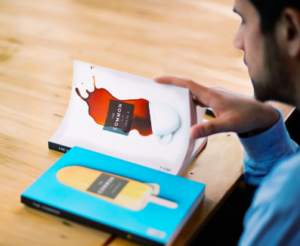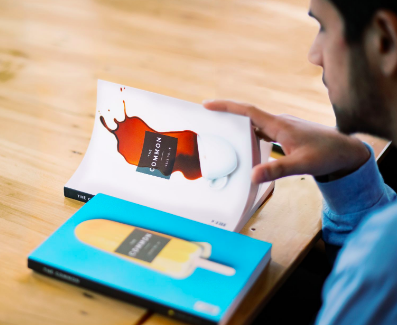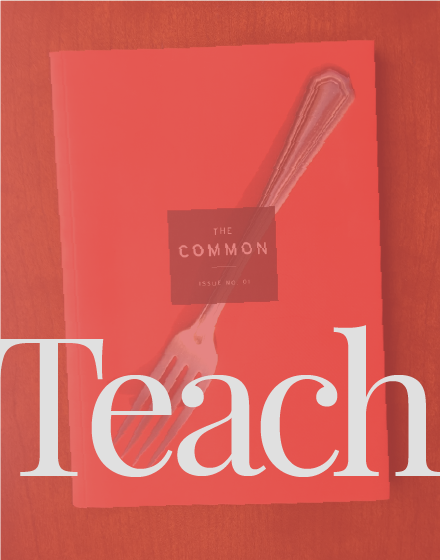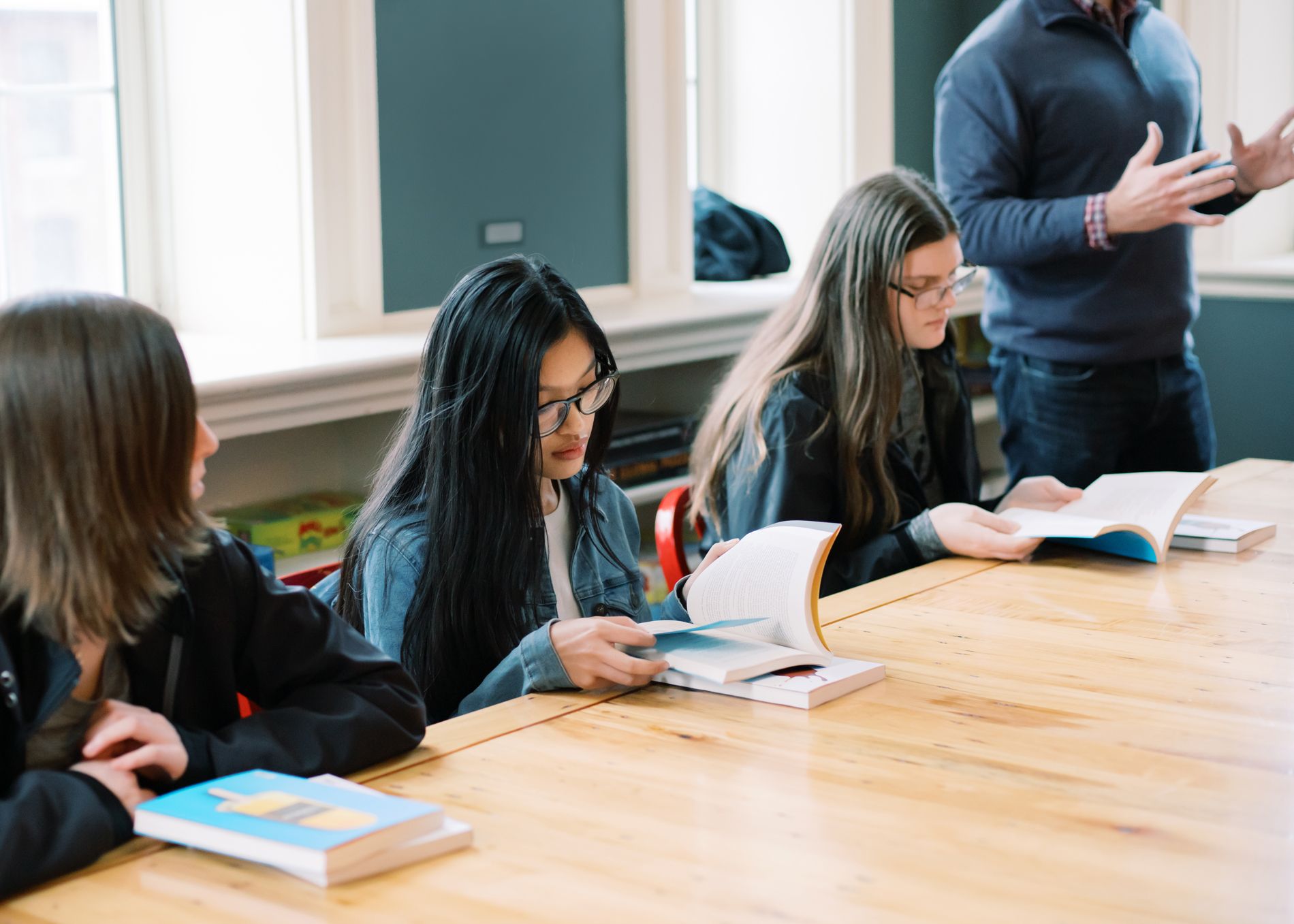During this difficult time, we want to take the opportunity to highlight a few educational resources we offer that are readily available for at-home learning. Even while stuck at home, you can use works from The Common to connect your students to new voices and perspectives from around the world, while also deepening their own sense of place. Several recently published web features will also offer students examples of how literature can help us to reflect upon the present moment.
The Common offers:
Free Access to Everything we Publish: We have always been committed to ensuring open access to our excellent place-focused literature. Browse and select poems, essays, stories, works in translation, audio recordings, and interviews to engage your students and inspire their own creativity. Or simply scroll to the bottom of this page.
Discounted Digital Editions: Put an issue of The Common in your students’ hands today, available for download immediately. Select from Kindle, ePub, or PDF options; $2/issue.
Free Lesson Plans and Complementary Resources: Use or adapt example assignments from your fellow teachers; visit the “Teach” page for each issue to find readings, interviews, and audio to accompany the issue and enhance student engagement.
Creative Writing Classroom Exercises: Looking for a longer-term solution to get your students writing (and revising)? We’ve compiled a 10-part series of generative writing and revision exercises (30 in total) alongside advice from our editors to help students develop their writing skills and establish a writing practice. $25 for the collection; select from either fiction/nonfiction or poetry.

Recommended Readings & Lesson Plans
Reflections on the Present Moment
Ask students to read the following pieces:
“Going Home,” Karen Kao’s dispatch from New Zealand and Australia tracks the coronavirus, rising racism, and increasing uncertainty.
“Intimations and Mercy, a letter from the Bronx,” by Judith Baumel enumerates the changes to daily life as Baumel returns to Wordsworth with new eyes, unearthing new meaning in the COVID era.
“All Night in the Tuberculosis Room,” in which Rena J. Mosteirin sits vigil at her grandmother’s deathbed; this essay depicts a time before the pandemic, while picking up themes that strikingly resonate with the current moment.
Or select another piece from our full list of pieces related to the pandemic.
Ask students to consider the different ways these writers approach their subjects and tackle their respective themes. Where do these pieces intersect? Where do they diverge from one another? With these different pieces in mind, ask students to write their own short dispatch from the past month.
Literary Translation: poetry or prose
Ask students to select one of the following pieces:
Marie-Andrée Gill: Poems in Translation from Spawn; In her introductory note, translator Kristen Renee Miller discusses the recovery of language, as Gill writes from her Mashteuiatsh community in Quebec, where the native language of Ilnu-aimun is spoken as a first language by a minority of residents, French the majority. Poems appear in both French and English.
“The Old Dog” by Inés Garland; This story traces the tension between two elderly characters and the animal interloper who seems to bring them together. In his introductory note, translator Richard Gwyn discusses the challenge of achieving the correct tone in translation. The story appears in Spanish and English.
Suggested Lesson Plan: Living with an Author and a Translator
For further exploration see: Literary Translation: Readings, Interviews, and Resources
Arabic Stories from Syria (Issue 17)
Ask students to read Issue 17’s portfolio of stories from Syria alongside “Translation as Art: Against Flattening” by Arabic Fiction Editor Hisham Bustani and “Silence in the Syrian Limbo: an interview with Odai Al Zoubi”.
Questions for students to consider/discuss:
-
-
- What is each story about?
- What is particular about the style of each piece? How do the authors achieve their respective styles?
- What do these stories have in common? Consider themes, style, types of characters, settings, etc. And, how do they differ?
-
Which story do you like the most? Explain why: is it the story’s content, language, and/or tone that pleases you, intrigues you, demands your attention or admiration, or…?
From Puerto Rico: One year after the storm (Issue 16)
Ask students to read the portfolio’s introductory excerpt from “Las Pisadas del Insomnio” by Ana María Fuster Lavín, as well as “To Abandon Paradise” by Ana Teresa Toro. Then, ask them to select two or three additional pieces from the collection.
Questions for students to consider/discuss:
-
-
-
- What is each piece about?
- What is particular about the style of each piece? How do the authors achieve their respective styles?
- What do these pieces have in common? And, how do they differ?
- How does each writer or artist respond to and reflect upon the circumstances Puerto Rican’s on the island and in diaspora face in the aftermath of Hurricane Maria?
- How might we draw on lessons from these pieces in our creative responses to the current moment?
-
-
Explore the World from the Comfort of your Couch (Issue 18)
Ask students to explore the interactive map of Issue 18 and select a poem, essay, or story.
Questions for students to consider/discuss:
-
-
- Why did you select this piece? What attracted or intrigued you?
- What role does place play in the piece: consider language, style, narrative tone, action, sensory detail, etc.
-
Then, ask students to write their own essay, story, or poem in which place plays a similar role – whether in the piece’s style, language, or detail.
If you have any questions about how to connect your students with The Common, contact Elizabeth Witte, Associate Editor & Director of The Common in the Classroom, at liz@thecommononline.org.



